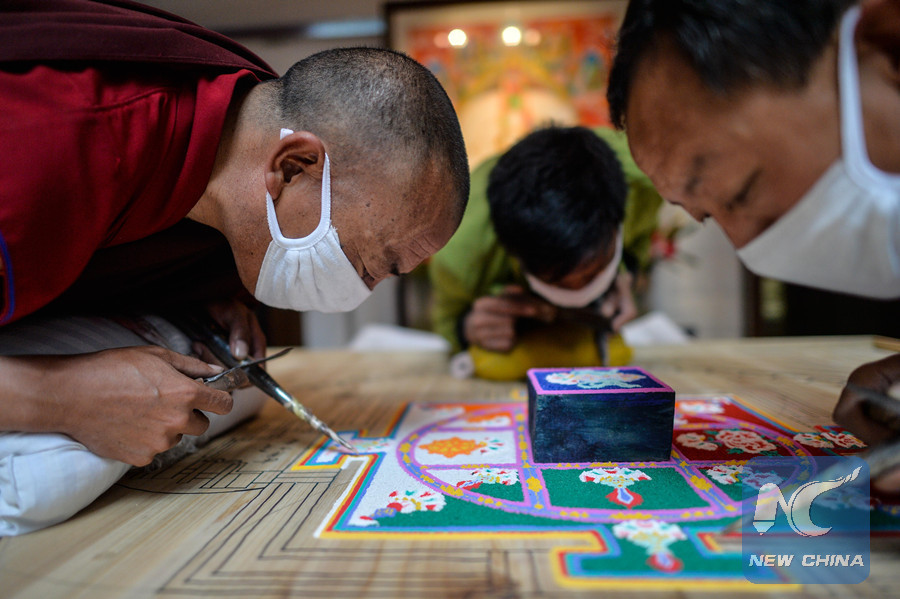
Tibetan Buddhist monks and assistants work on the sand mandala on May 12, 2016. (Xinhua/Purbu Tashi)
Tibet boasts very unique and original arts and crafts that are closely related to Buddhism. Mostly untouched by the outside world, the pure forms of Tibetan arts have been preserved over a long period of time. Everything has the original Tibetan essence and its own charm. If you are on a trip to Tibet or planning to go there, don't forget to take home some of the handiwork. Here are some tips on what to admire and pick.
Thangka
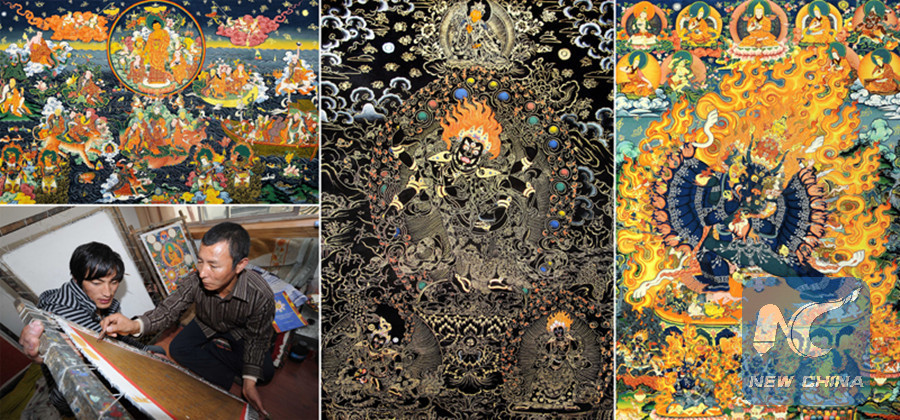
Thangka paintings and a student learning from a thangka master in Lhasa. (Xinhua)
Thangka is perhaps the most widely known Tibetan art. As an over 1,300-year-old traditional Tibetan form of religious art, thangka can be seen almost everywhere in Tibet: in monasteries, shops and restaurants and at every Buddhist's home.

A silk thangka (Xinhua/Zhang Hongxiang)
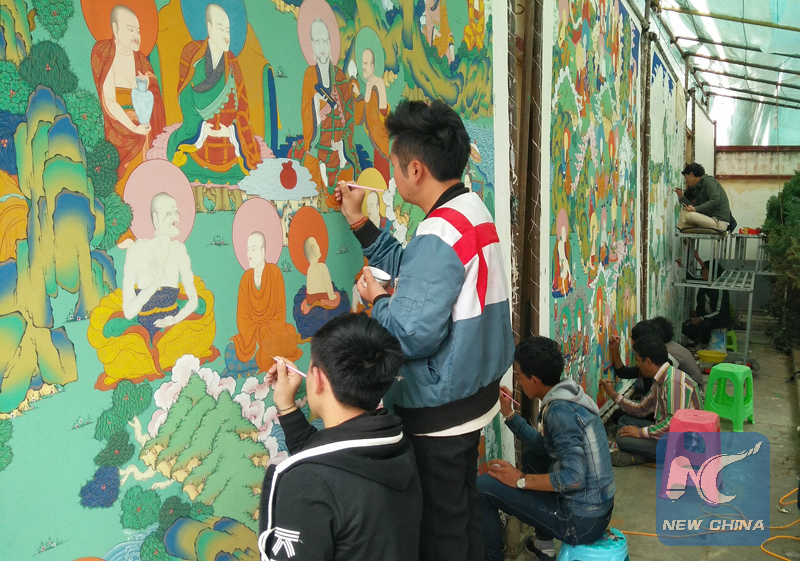
Thangka painters are working together on a huge painting at a workshop in Lhasa, July 20, 2016. (Xinhua/Jigme Dorje)
Thangkas are Tibetan Buddhist scroll paintings on paper, cloth or silk. Subjects are mainly deities, religious stories and mandala. Some also illustrate the history and customs of Tibet and lifestyles of Tibetan people.
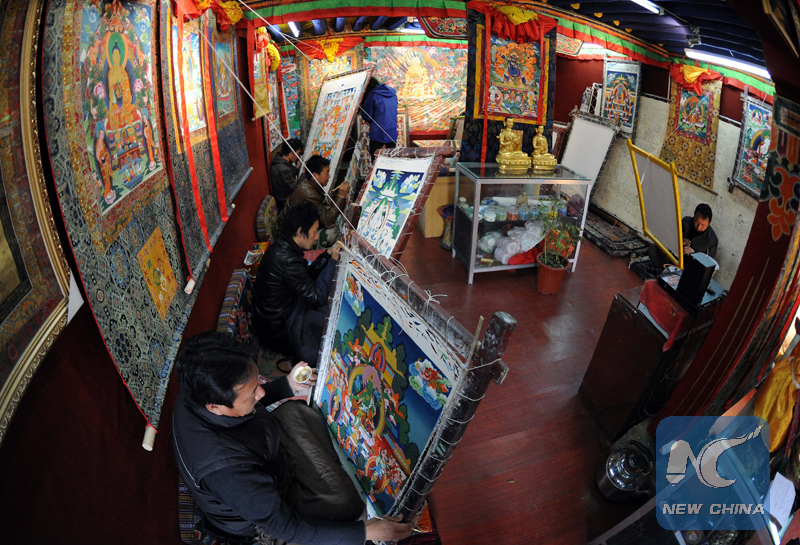
Painters draw thangka at a workshop on Barkhor Street in Lhasa, capital of the Tibet Autonomous region in southwest China. (Xinhua)
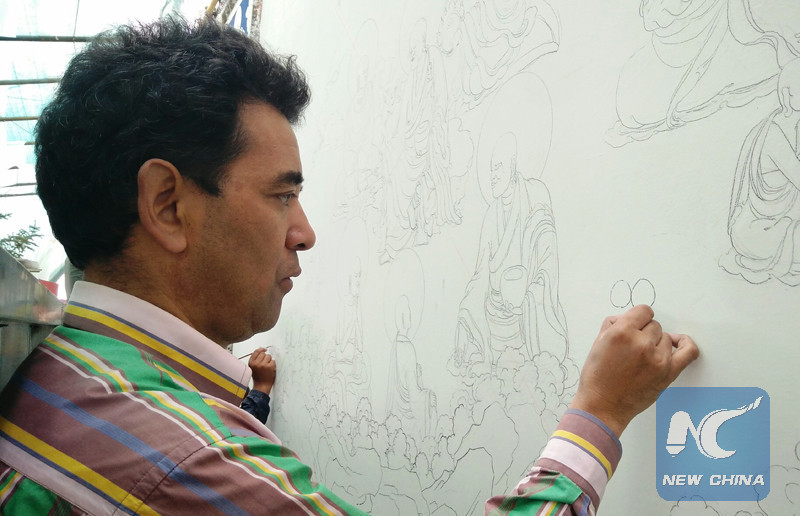
A thangka master is drawing foundational lines of the deities and other figures and objects. (Xinhua/Jigme Dorje)
While the size of a Thanka painting can be extremely large, tens of meters in each dimension, most thankas are similar to a Western half-length portrait and easy to carry.

A huge thangka is displayed during the "unveiling of the Buddha" event at the Zhaxi Lhunbo Lamasery in Xigaze, southwest China's Tibet Autonomous Region, July 20, 2016. (Xinhua/Purbu Tashi)
Sand mandala
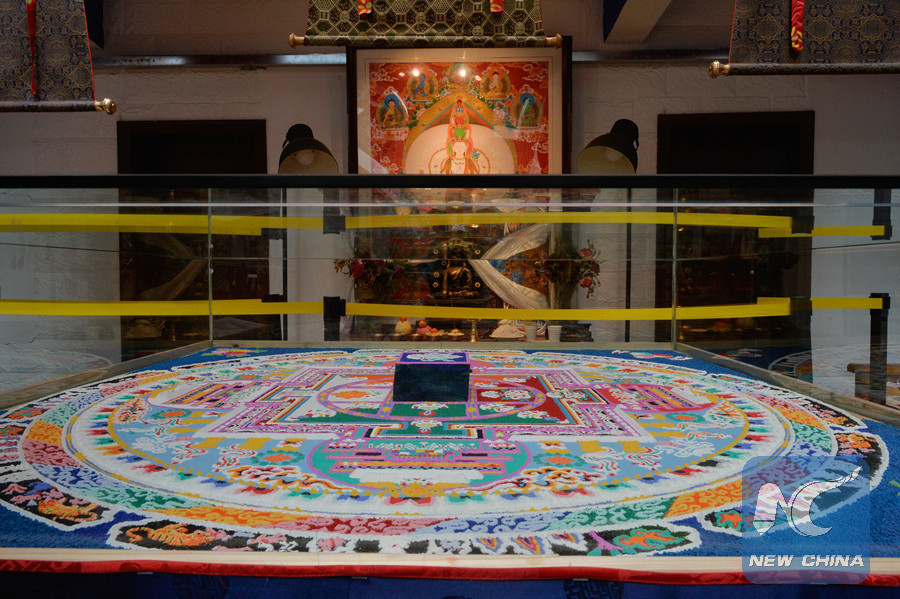
Photo taken on May 20, 2016 shows the completed sand mandala. (Xinhua/Purbu Tashi)
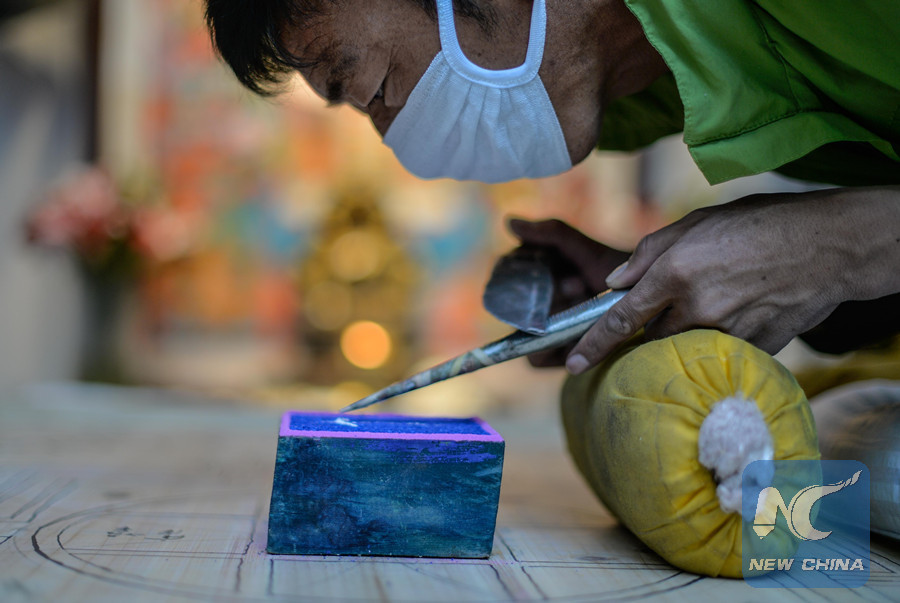
An assistant lays sand grains at the center of the sand mandala on May 11, 2016. (Xinhua/Purbu Tashi)
Unique to Tibetan Buddhism, the sand mandala is created from colored powders, as suggested by its Tibetan name "dul-tson-kyil-khor".
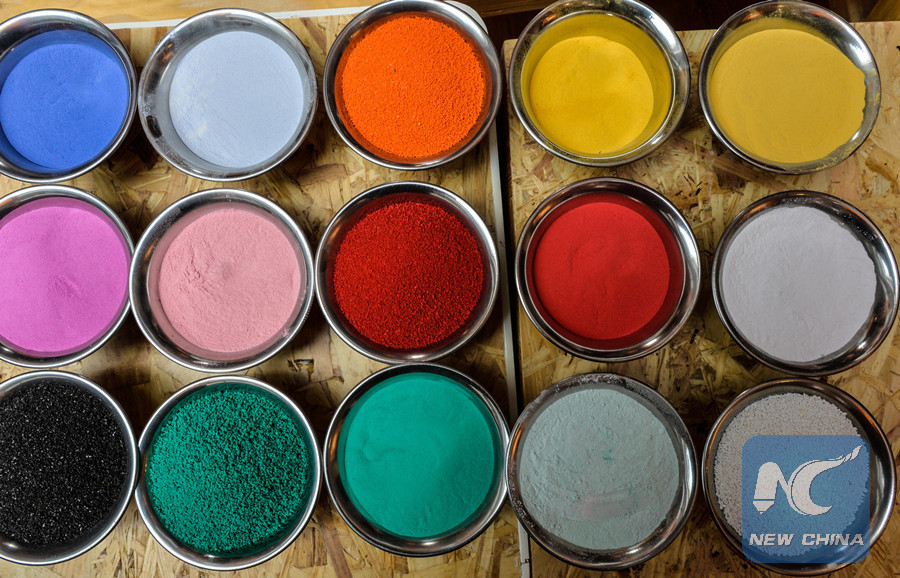
Photo taken on May 10, 2016 shows mineral powders used to create the sand mandala. (Xinhua/Purbu Tashi)

A Tibetan Buddhist monk meditates before start working on the sand mandala on May 10, 2016. (Xinhua/Purbu Tashi)
But you cannot take the sand mandala home, because it is just like a sandcastle - it's created from colored powders. It takes weeks to make one, and when completed, the mandala is blessed --and then demolished.
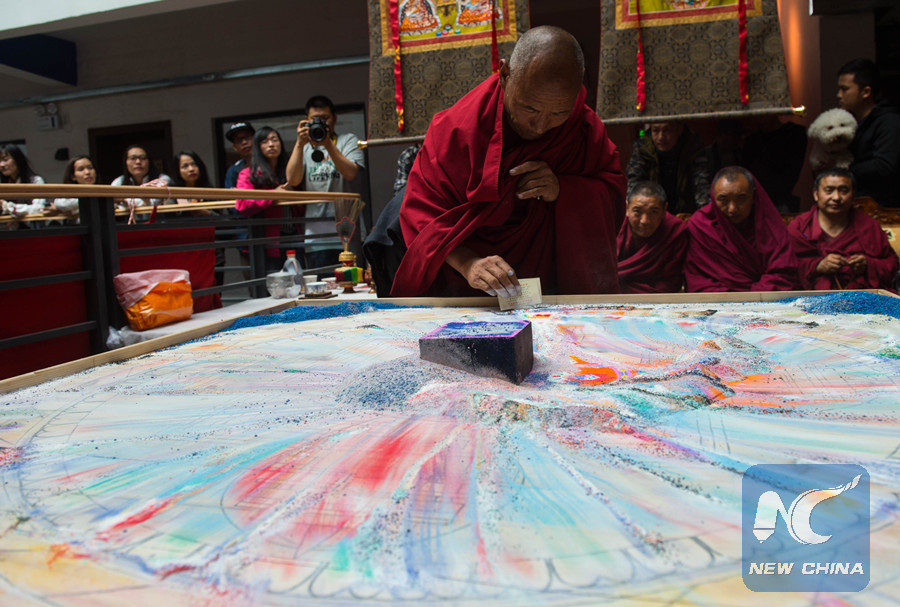
A Tibetan Buddhist monk is destroying the sand mandala on May 20, 2016. (Xinhua/Purbu Tashi)
It would be worthwhile to witness the process, as the mandala symbolizes impermanence: some beauty is only meant for this world for a short time.
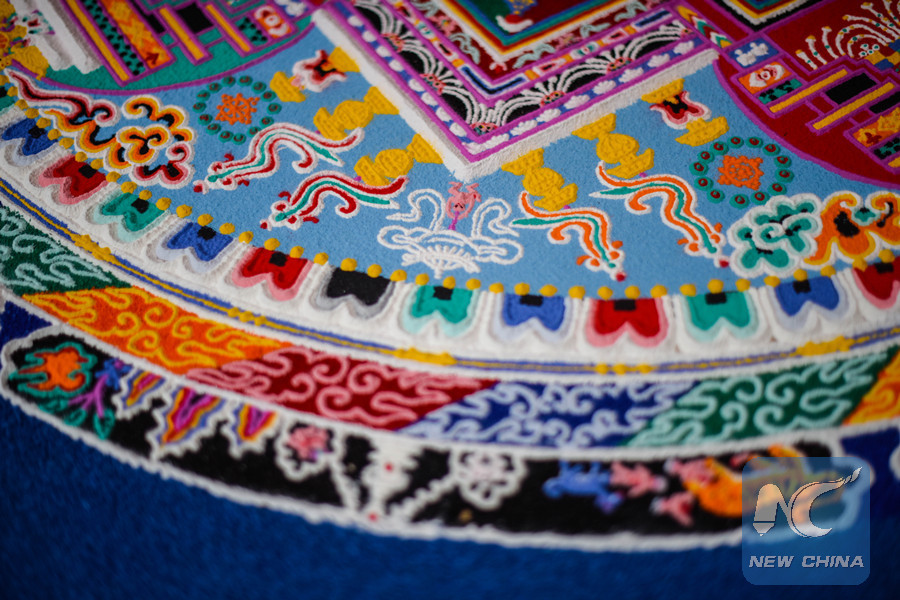
Photo taken on May 20, 2016 shows some of the patterns of the sand mandala. (Xinhua/Purbu Tashi)
Tibetan incense
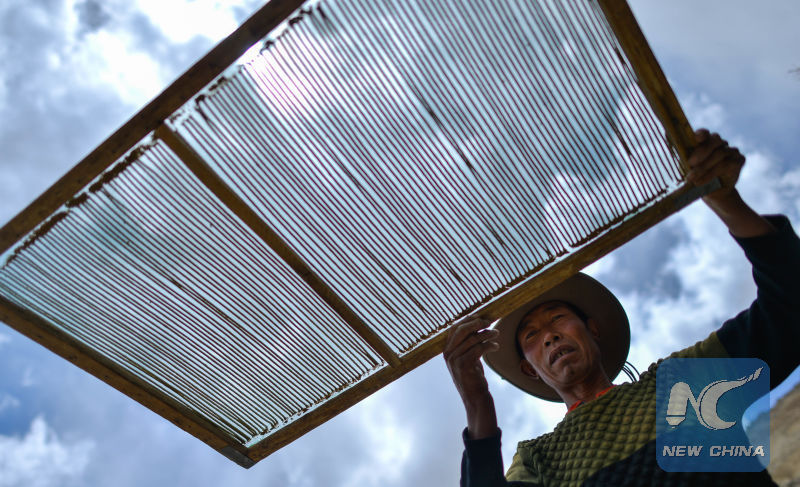
A worker checks the incense sticks in the drying process. (Xinhua/ Purbu Tashi)
The incense is known for its unique production techniques and natural ingredients free from man-made pollution. As well as being used in Buddhist rituals, it is believed to help kill germs, purge contaminated air, and aid sleep.
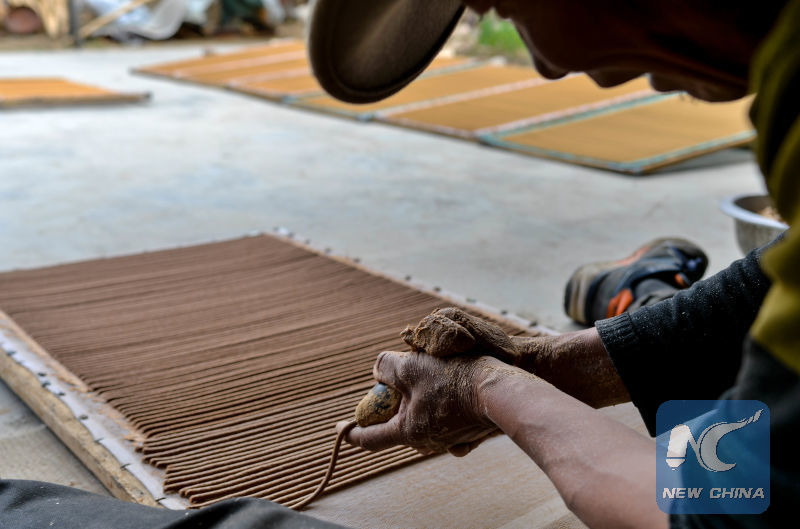
A worker makes incense in his village home in Nyemo County of Lhasa on May 26, 2016. (Xinhua/Purbu Tashi)
In 2008, Tibetan incense-making was included in China's state-level list of intangible cultural heritage.

Photo taken on May 26, 2016 shows a worker (L) with bundles of Tibetan incense ready for sale. (Xinhua/Purbu Tashi)
It is expected the incense will bring prosperity to the users as well as tranquility to the soul.
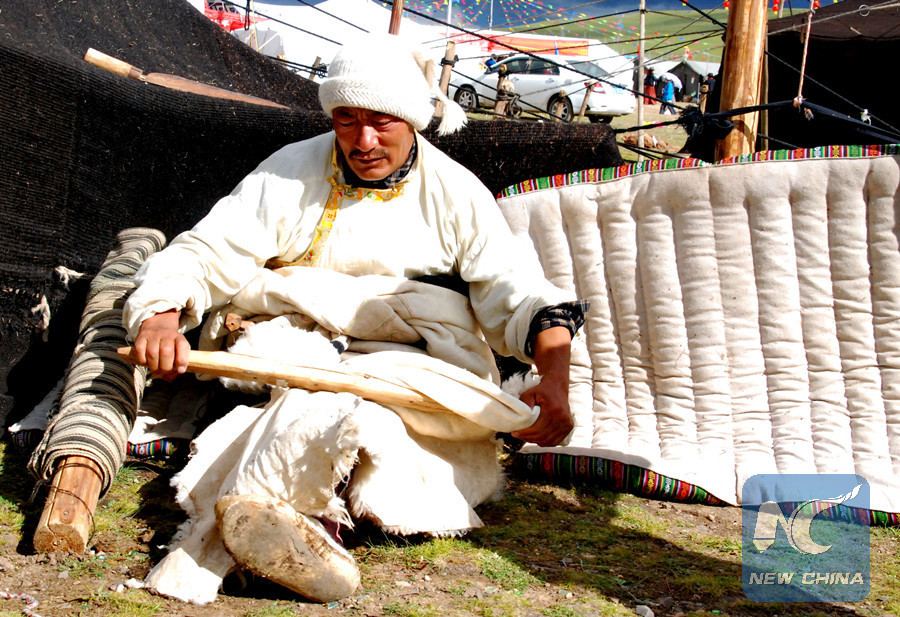
A craftsman softens sheepskin by rubbing it with a traditional tool. (Xinhua/Shi Haoyi)

